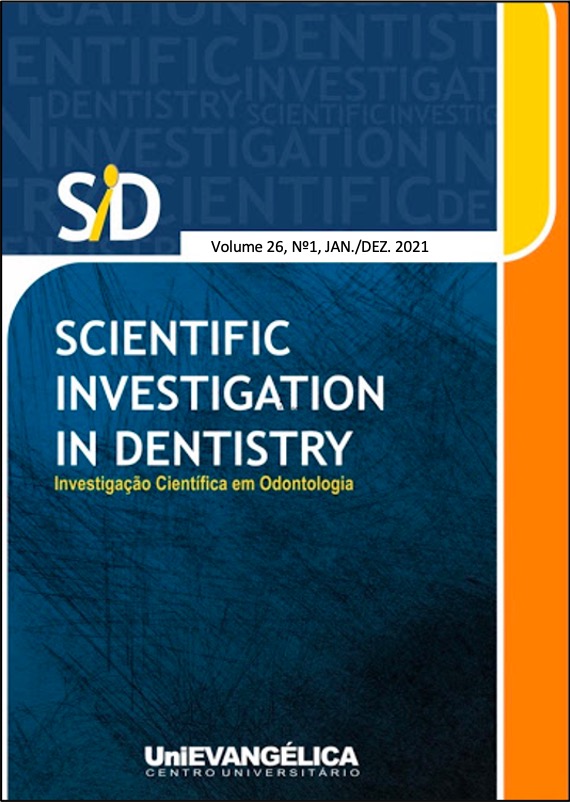OCCURRENCE OF DENTINAL DEFECTS WITH THE USE OF BIORACE, K3, PROTAPER UNIVERSAL AND HERO 642 SYSTEMS
DOI:
https://doi.org/10.37951/2317-2835.2021v26i1.p102-112Abstract
The aim of this study was to evaluate the occurrence of dentinal defects after root canal preparation with different instruments. One hundred extracted human mandibular molar were selected. The coronal portions and mesial roots were removed leaving distal roots of 14 mm in length. The roots were allocated into 1 control group and 4 experimental groups (n=20). Roots in the control group were left unprepared, whereas the others were prepared using BioRace®, K3®, ProTaper Universal® and Hero 642® nickel-titanium (NiTi) rotary systems. All roots were horizontally sectioned at 1, 3, 6, and 9 mm from the apex, stained with 1% methylene blue, and viewed through a stereomicroscope at 40X magnification. The slices were inspected, and the absence/presence of root dentin defects recorded. Statistical analysis of the data included frequency distribution and association testing. The statistical significance for the association between the variables was determined using the chi-square test. The established level of significance was p <0.05. A total of 300 slices were examined. BioRace® was associated with a significantly higher number of partial cracks, craze lines and root fractures than K3® and Hero 642® (p<0.05) but was not significantly different from ProTaper Universal®(p>0.05). Regarding the different sections, more defects were observed in middle (6 mm) and coronal (9 mm) sections when compared with apical (3 mm) sections. The use of NiTi instruments during the root canal preparation resulted in the root dentin defects.
Downloads
Published
Issue
Section
License
Declaro que o trabalho de minha autoria foi submetido apenas para este periódico e por isto, não sendo simultaneamente avaliado para publicação em outra revista. Nós autores, acima citados, assumimos a responsabilidade pelo conteúdo do trabalho submetido e confirmar que o trabalho apresentado, incluindo imagens, é original. Concordamos em conceder os direitos autorais ao periódico Scientific Investigation in Dentistry.

